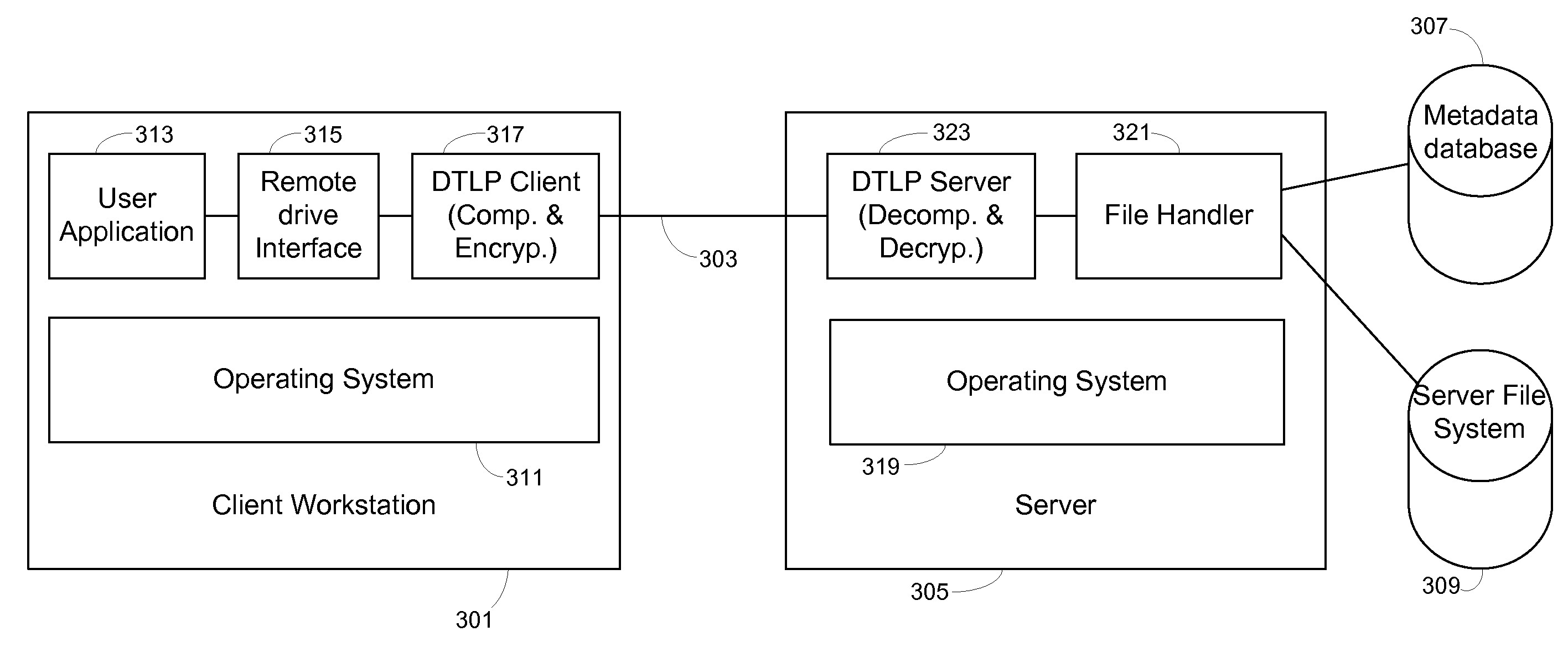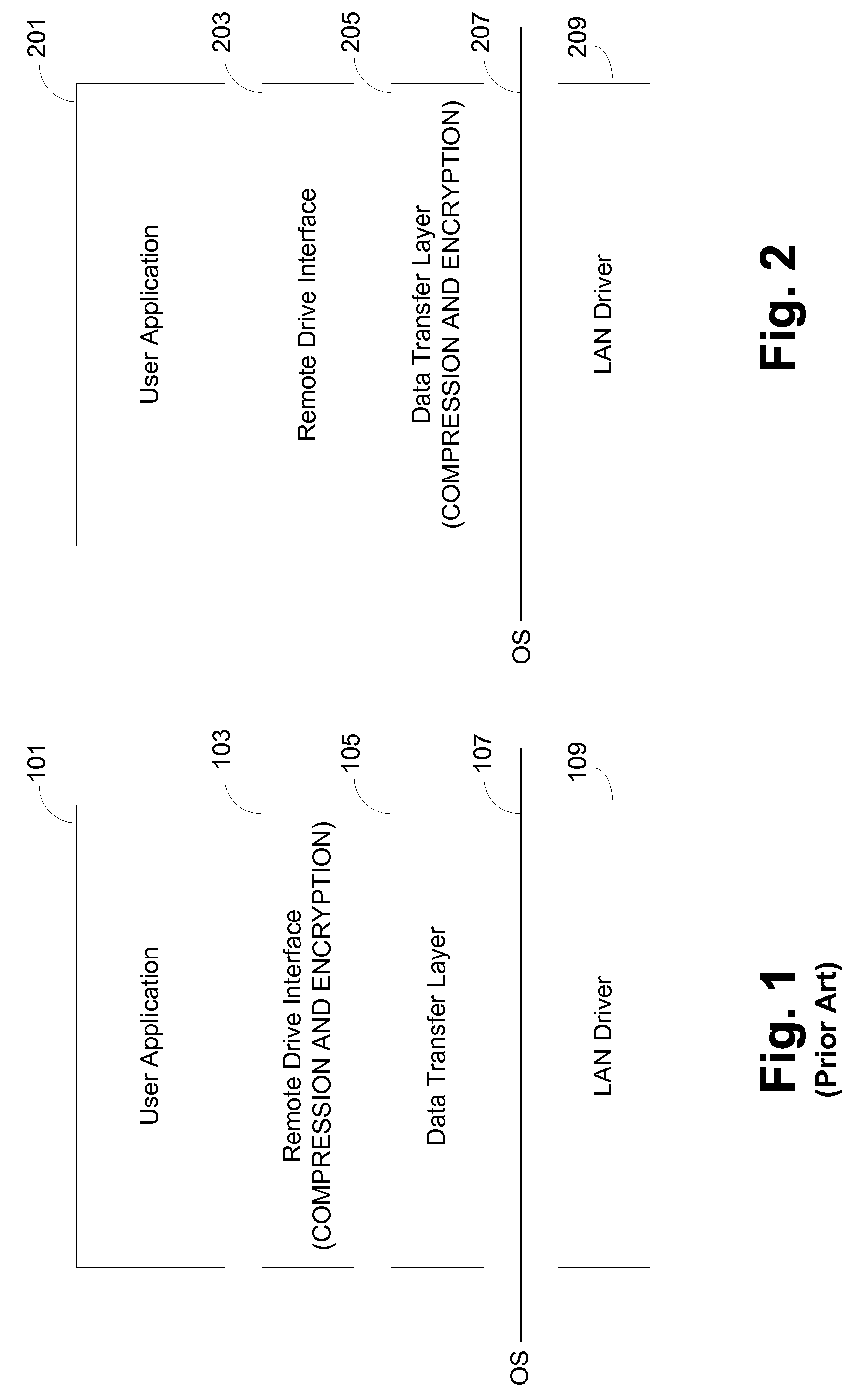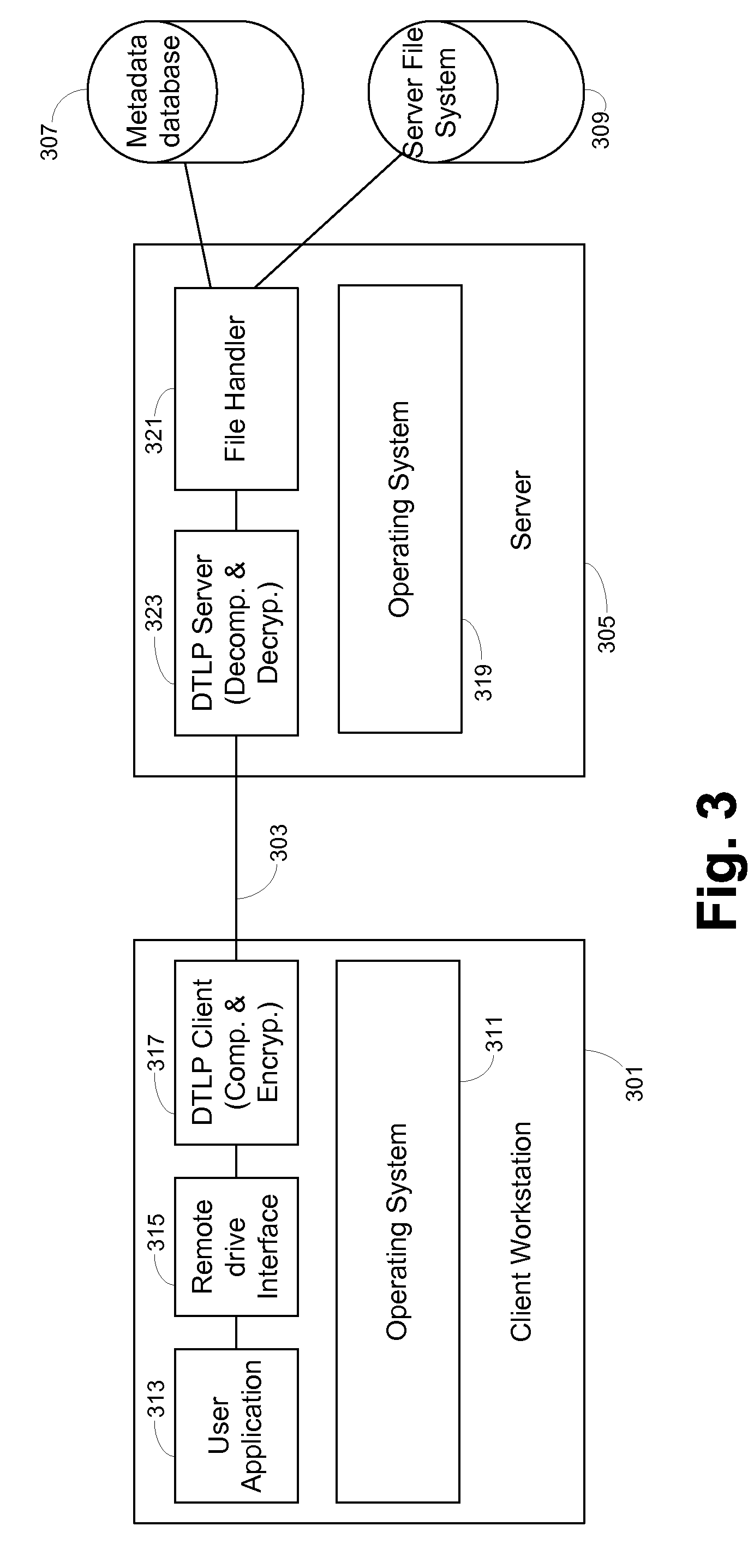Secure block read and write protocol for remotely stored files
a remote file and block read and write technology, applied in the field of remote file operations, can solve the problems of large delays, inefficient operation, and even small modifications, and achieve the effect of efficient and secure communication
- Summary
- Abstract
- Description
- Claims
- Application Information
AI Technical Summary
Benefits of technology
Problems solved by technology
Method used
Image
Examples
Embodiment Construction
[0017]FIG. 2 illustrates the client side network architecture 200 of the preferred embodiment. The network stack includes a user application 201, a remote drive interface 203, a data transfer layer 205 and a LAN Driver 209. The horizontal line labeled “OS” indicates that the layers below the line, e.g., the LAN Driver layer 209, are implemented within the operating system (OS) kernel. Note that the OS line 207 may be placed at the interface between any two layers. However, the embodiment shown does not preclude the layers from being implemented in the hardware, e.g., within the network interface card. Also note that the lower network layers (e.g., the physical layer) have not been shown for simplicity. Although not shown in FIG. 2, it is implied that the client side network stack 200 communicates with a server that includes remote file storage.
[0018]The remote drive interface 203 of the embodiment shown in FIG. 2 offers block level file operations to the user application layer 201. ...
PUM
 Login to View More
Login to View More Abstract
Description
Claims
Application Information
 Login to View More
Login to View More - R&D
- Intellectual Property
- Life Sciences
- Materials
- Tech Scout
- Unparalleled Data Quality
- Higher Quality Content
- 60% Fewer Hallucinations
Browse by: Latest US Patents, China's latest patents, Technical Efficacy Thesaurus, Application Domain, Technology Topic, Popular Technical Reports.
© 2025 PatSnap. All rights reserved.Legal|Privacy policy|Modern Slavery Act Transparency Statement|Sitemap|About US| Contact US: help@patsnap.com



